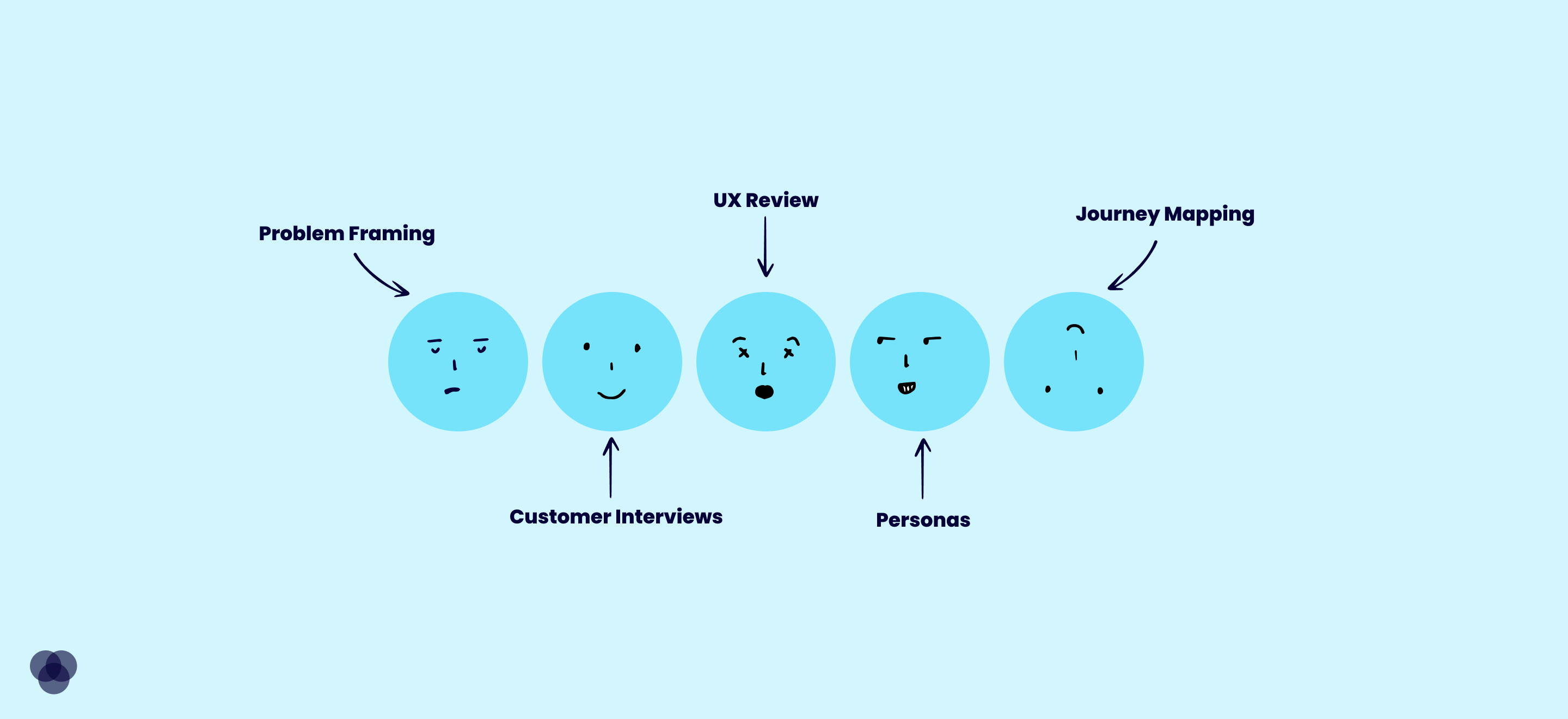Developing a Customer Experience (CX) Strategy
5 steps to help you get started

Enabling change to become a customer-centric business ensures you have the tools necessary to truly understand your customers wants and needs, creating a better experience and thus leading to increased engagement.
Customer Experience (CX) can be a very one sided journey. Unless you ask for direct feedback you never truly know what your customers value from your business or how they are using your service. Many decisions are made without any understanding of your audience.
This is where Customer Experience (CX) comes in, it refers to how customers feel about every touchpoint with your brand. It encompasses your customers’ expectations and pinpoints the emotional value your service brings step of the way. By understanding your customers’ past, present, future intentions and feelings, business leaders are better informed to build future thinking experience strategies. It’s all about delivering a positive and consistent experience and demonstrating a dedication to your customer at every touchpoint interaction along the journey. CX thinking involves a lot of care, empathy and understanding of your audience.
If you can back up business-transforming decisions using empathy and data, you are onto a winner.
In order to understand CX, and the value it can bring to your business it’s important to first adopt a framework that identifies any existing gaps that might need further attention.
The below 5 steps will help you get started;
- Problem Framing
This is where we start to learn as much about your business, your team and your customers as possible. By gathering the all-important requirements and agreeing on the measure of success, you are set up to win. Problem Framing workshops are key to gaining enough understanding of business goals and future roadmaps as well as known customer motivations, ambitions and problems. It is important to define business and customer challenges that exist, map out customer journeys and identify any persistent problems within each touchpoint to understand areas of value to further investigate. If there is a persistent problem with your product user interface, your website is not the conversion machine you hoped for or you are getting too many inquiries at your call center, this needs to be identified early on in order to put a plan together. This will ensure a clear understanding and plan going forward.
Problem Framing workshop findings are critical to help build research strategies to help validate the business assumptions against the customer’s actual experience (the Gap)
2. Interviewing Customers 1:1
By taking a deep dive into your customer’s world and gaining the all important feedback you begin to understand what’s really going on. Here we begin to add a level of empathy into the mix and allows a level of validation to be put in place from the hypothesis gathered at the Problem Framing workshops. Interviewing customers is also key to ensuring ‘real world’ personas are created.
Here we are looking to identify customers’ perceptions and feelings about an experience when interacting with your service, which means we need to speak to current customers, not everybody! By conducting in-depth one-on-one interviews we begin to uncover pain points, frustrations, opinions, drop-off points, and overall satisfaction levels, all while we discover ‘real’ customer journeys and begin to understand whats going on. You’ll be surprised by what you may learn.
3. UX Review & Analytics Deep Dive
A UX Review is an analysis of all interactions that encompass a full customer experience. From first engagement, a visit to your website, interaction with your app or a sign-up to your emails. The aim is to identify any pain points or friction in the experience where we can make necessary changes. A UX Review will highlight potential problem areas and customer touchpoints to focus on. This is usually really interesting when there is lower engagement when predicted to be much higher.
Coupled with data analytics to report on drop off rates and dead ends, the aim is to match the real data with the customer insights. Here we can see where users have come from, how they interact with your experience and where they essentially drop off and potentially leave unsatisfied.
Although this is less empathetic and doesn’t capture any feelings, a UX Review and Analytics Deep Dive is a powerful tool to hold up against customer research.
4. Building Real Personas
As well as a strong tool for marketing efforts building real personas are great when thinking about any type of change or digital transformation across a business. These are important to keep an eye on from time to time as the landscape changes faster than most businesses can keep up with. Personas are best created using insights from customer interviews, which allow a better understanding of the key traits, behaviors, and goals. This helps build a level of empathy and understanding when making decisions and there is nothing more powerful than building personas from listening to customers, and actually developing an understanding of what they need, or what they don’t need.
At the core, personas can be used to design and develop products and strategies with a specific, not generic, user in mind. Its usually best not to base personas on an individual person, more so on a group or segment that have been identified. Personas are applied in the early stages of design to communicate user needs, allowing us to keep the real user at the heart of each design decision. It’s important to have personas to represent your customer when making decisions that affect them and they will support a better decision-making process.
5. Mapping the entire Customer Journey
Now we have our real personas we can begin visualising an entire end-to-end experience that customers go through in order to accomplish their goal. This will help embed an understanding of how, why and when customers are interacting with your business.
A customer journey map is created for each persona group and helps to visualise customers experiences before, during and after engagement to allow stakeholders to gain a further understanding of the entire experience, highlighting potential areas of improvement and opportunities for support, retention and new products. Even eliminating interactions that are not of value.
We use journey maps to capture users’ feelings to help define strategies around content. If a customer feels anxious, is lacking inspiration, happy or just confused, we now have the tools to begin enabling them to feel valued.
To achieve a true transformation in customer experience, we recognise the necessity of applying an enterprise-wide approach to rethinking and redesigning the customer experience landscape.
A CX strategy is a significant step towards ensuring consistently positive experiences for all customers and raising the profile of the ‘customer’ through the organisation and will ensure you are set up to identify the key change priorities for the business. As a differentiator, enhancing your customer experience is essential.
A CX strategy is a significant step towards ensuring consistently positive experiences for all customers. Raising the profile of the ‘customer’ through the business will ensure you are set up to identify any key changes required to increase your engagement. As a differentiator, enhancing your customer experience is essential.
contact
We'd love to chat growth with you today.
Sydney, Australia
2 Ada Street, Brookvale, Sydney, NSW 2099
United Kingdom
Unit 2 Dunheved Rd, Pennygillam Way, Pennygillam Industrial Estate, Launceston, PL15 7ED

